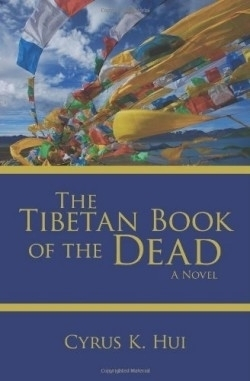The Tibetan Book of the Dead
In The Tibetan Book of the Dead by Cyrus K. Hui, a stolen treasure is being taken by force toward Switzerland and a secret Nazi hideout. From Beijing, Dr. Nima Ganpa leads an expedition into Tibet to find ancient clay tablets written in cuneiform that contain the words of Tonpa Shenrab Miwo, the Enlightened Savior. The tablets describe how to find Nirvana.
In a parallel plot that provides historical background for the story, Yeshe, a Buddhist disciple in the year 750 CE, searches for the lost information, saying, “‘Man finds it most difficult to depart from this world…When one fully masters the elementary vehicles, one will be capable of freely entering and exiting death, traveling forward and backward through space and timeÂ…Only the most dedicated ones who fully master the fifth and final Vehicle of Fruition will be capable of choosing between the Womb of the Living Buddha or the Womb of Nirvana.’” According to the ancient wisdom, trying and failing to enter Nirvana is worse than not trying at all. Hopeful, Yeshe attempts to cross over.
Back in the present day, others beside Dr. Ganpa are also searching for the clay tablets, and some will stop at nothing to obtain them and the secrets of life and death. In competition are treasure hunters seeking antiques with resale value and German Nazis who have been biding their time since WWII, waiting for the right opportunity to learn the secrets of immortality. Dr. Ganpa’s adoptive grandfather, Yongxing, is aware of the others who seek the tablets and believes he has things under control with the Nazis. He thinks the “expedition will be the bait to ‘tease the snake out of the pit.’” The tablets are easily found, and chaos erupts as control of the find becomes paramount. Tension rises and the outcome hangs in doubt.
The Tibetan Book of the Dead is well researched, and for those unfamiliar with the subject matter, the discernment between truth and fiction may be a challenge. The book’s flaws include the all-too-easy discovery of the clay tablets and a trick of the plot involving the tablets that renders the story completely unbelievable. Characterization is almost nonexistent in this novel, but descriptions of the history and geography of Tibet will stir desire to tour that region. The book is heavy with the religion of the East, but for those who can endure the author’s apparent attempts at converting readers, The Tibetan Book of the Dead may prove intriguing.
Disclosure: This article is not an endorsement, but a review. The publisher of this book provided free copies of the book and paid a small fee to have their book reviewed by a professional reviewer. Foreword Reviews and Clarion Reviews make no guarantee that the publisher will receive a positive review. Foreword Magazine, Inc. is disclosing this in accordance with the Federal Trade Commission’s 16 CFR, Part 255.

